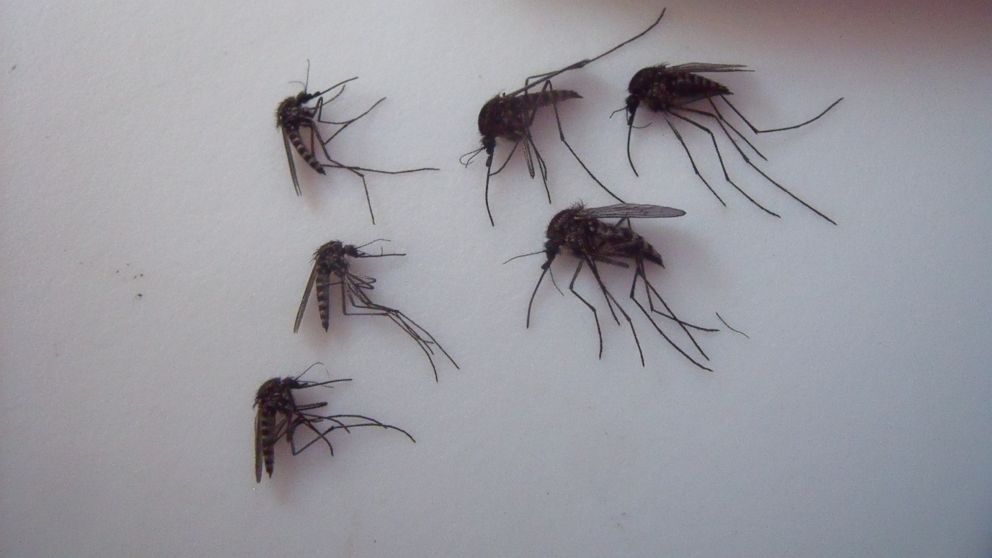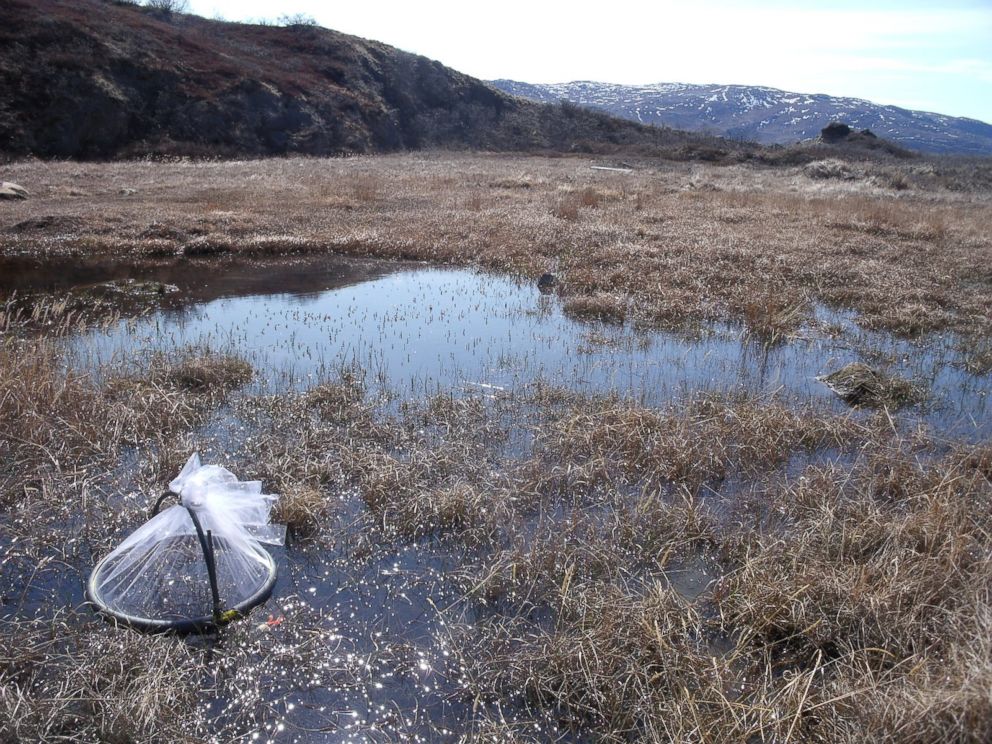See the Giant Arctic Mosquitoes That Are Thriving in a Changing Climate
Scientists believe climate change may be affecting these bloodsucking insects.

— -- The Arctic mosquito, a larger, furrier version of the ubiquitous pests, are getting a longer breeding season as Arctic ponds warmed earlier in the year, researchers from Dartmouth have found.
As a result, the Arctic mosquito, or Aedes nigripes, were in the air bothering humans and wildlife alike earlier in the season, according to a new study published in the Proceedings of the Royal Society B: Biological Sciences.
"They absolutely will bite people," lead author Lauren Culler told ABC News today. "They’re active at any time of day. If you’re in the Arctic in the middle of mosquito season, there are hundreds of mosquitoes [that want] a blood meal."
The large flying insects are a nuisance to humans but potentially harmful to wildlife, especially caribou, Culler explained. While they're not known to spread disease, the persistent insects can drive the caribou to remote snowbanks or hilltops to seek shelter.

"[They] can drive a person mad. It can probably drive a caribou mad, too," Culler said. "Caribou in response to high insect activity, they will move away and try to find relief. They will go to the top of windy hill. When they do that, they are often moving to areas with no food or no quality food."
To study how mosquitoes are reacting to climate change, the team conducted field tests to see when mosquitoes were hatching and checked to see how fast they could grow in the lab at constant temperatures.
They found the pests developed 10 percent faster for every 1 degree Celsius increase in temperature. Should the average temperatures increase by 2 degrees Celsius, the researchers estimated the mosquitoes would increase their probability of survival by 52 percent.
The earlier the insects hatch, the bigger a problem they become for the caribou since they overlap with the birth of caribou calves, researchers said, noting that if the calves are forced to retreat to snowier or more desolate areas, they could die without adequate nutrition. Culler said it's important to keep studying mosquitoes as a harbinger of what could happen to the whole ecosystem if temperatures keep rising. In the Arctic, temperatures have increased at twice the global rate in the past 100 years, according to the study.
“Increased mosquito abundance, in addition to northward range expansions of additional pest species, will have negative consequences for the health and reproduction of caribou,” Culler said in a statement. A warm Arctic can mean less caribou, "which are an important subsistence resource for local communities," she noted.
As the climate changes, scientists have warned it's not just Arctic caribou that are in trouble. In California, experts said the historic drought likely led to a record-breaking number of deaths from West Nile Virus spread by mosquitoes.
“As birds and mosquitoes sought water, they came into closer contact and amplified the virus, particularly in urban areas," California Department of Public Health Director Dr. Karen Smith said in a statement earlier this year.
In 2011, the then-director of public health and environment for the World Health Organization told ABC News that malaria is becoming more of a risk as mosquitoes reach higher elevations.
"Climate change will touch the pillars of our health, food, water and shelter," Dr. Maria Neira, WHO's then-director of public health and environment, told ABC News in 2011. "In Asia, there are more people at risk of dengue fever due to global warming. In Mount Kenya, mosquitoes are being found at higher and higher elevations."



